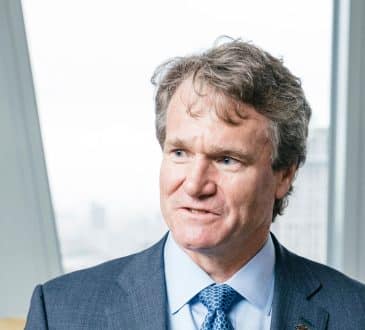How to Address Employees Yearning for Purpose at Work Without Stoking Divisiveness and Intolerance

The scene is the employee canteen in DePuySynthes in Ringaskiddy, a site later to win the Shingo Prize for excellence in Lean. I am running 3 employee workshops every day as part of my Rapid Mass Engagement (RME) culture change process. A shop-floor employee, Paul Deasy, and I are discussing RME in a break between workshops.
Paul explained how skeptical he had been, given his experience of a global brand consultancy ‘telling’ the workforce what to do in an earlier failed intervention aimed at introducing a Lean culture and methodology to the site. Then Paul looked at me and said, “When I realized this was about my family and my community, I was immediately 100% behind it.”
What had convinced the ultra-skeptical Paul to switch so rapidly (hence Rapid Mass Engagement) in support of the transformational process in this part of Johnson & Johnson?
From Purpose to Higher Purpose
Johnson & Johnson employees benefit from the founding values of that company — called “The Credo” — and the permanent investment, role-modelling and training deployed to make it reality. The Credo is intended to provide purpose at work for J&J employees — and yet the performance of the factory was lagging its internal and external competitors. What was added to the cultural mix to spark the remarkable transformation in the factory that followed?
J&J’s Credo, its corporate purpose, is a great start, but my experience with many thousands of employees is that this is necessary but not sufficient to generate the kinds of transformations in performance experienced in the Ringaskiddy location.
Fast forward to today and survey after survey point to a powerful desire among employees to find purpose in their work. Organizations have responded with well-intentioned but sometimes counterproductive initiatives such as ESG. In response to powerful societal events such as the murder of George Floyd, HR teams searched for ‘experts’ in these matters and found people who wrote about racism. The intent was always well-meaning, but quality assessment was lacking and it generated a ticked box mentality.
C suites everywhere felt “Phew, we have that one covered!” — but had they really? The swallowing whole of training from external organizations that excel at political activism but are insensitive and counter-productive in my field of employee engagement and enablement, often had the effect of increasing divisiveness and multiplying the polarization in the wider society.
We have a duty to our employees to equip them with the skills to see the good in others, to seek consensus and to respectfully tolerate differences — not amplify — polarizing societal trends. Higher Purpose helps achieve this as it unites entire workforces behind a totally positive endeavor to improve an organization and create opportunities for people and their communities.
How Does Higher Purpose Differ from Purpose?
Let’s look for a clue in Paul’s words. He understood and bought into J&J’s purpose of alleviating pain and suffering, but there was something closer to his heart, namely his family and his community: for him, what we were trying to do in J&J was up close and personal. He recognized that RME’s creation of a local Higher Purpose and local, employee-created behavioral standards, would directly and immediately impact him personally.
This was achieved by the creation of jobs, doubling the workforce during the 2008-2011 global crash. Creating jobs in Paul’s factory and his local community provided a motivation and degree of discretionary effort simply not available through corporate purpose alone.
Will Higher Purpose Alone Deliver Transformation?
The short answer is no, but it increases the probability of widespread employee adoption of the new improvement culture and it answers the key employee question: “Why are we doing this?”
In summary, working to create and sometimes agree a Higher Purpose for your locations is an important but not sufficient way of achieving culture change much more quickly than conventional practice argues, is possible. It also helps with those tricky polarizing societal issues that are usually not a focus point for CEOs or even HR Directors, but massively impactful on employee engagement.
Written by Frank Devine.
Have you read?
Mixed Reality and Its Uses by Alex Kipman.
The Value of Showing Up and Following Through by Lisa Gable.
Simple Ways to Align Your Team and Get Your Organization Running Like a Well-Oiled Machine by Carol Schultz.
Interview with Kim Gravel, Author of Collecting Confidence.
4 Steps for Pre-Planning Your Exit Strategy by Rhett Power.
Add CEOWORLD magazine to your Google News feed.
Follow CEOWORLD magazine headlines on: Google News, LinkedIn, Twitter, and Facebook.
This report/news/ranking/statistics has been prepared only for general guidance on matters of interest and does not constitute professional advice. You should not act upon the information contained in this publication without obtaining specific professional advice. No representation or warranty (express or implied) is given as to the accuracy or completeness of the information contained in this publication, and, to the extent permitted by law, CEOWORLD magazine does not accept or assume any liability, responsibility or duty of care for any consequences of you or anyone else acting, or refraining to act, in reliance on the information contained in this publication or for any decision based on it.
Copyright 2024 The CEOWORLD magazine. All rights reserved. This material (and any extract from it) must not be copied, redistributed or placed on any website, without CEOWORLD magazine' prior written consent. For media queries, please contact: info@ceoworld.biz
SUBSCRIBE NEWSLETTER








